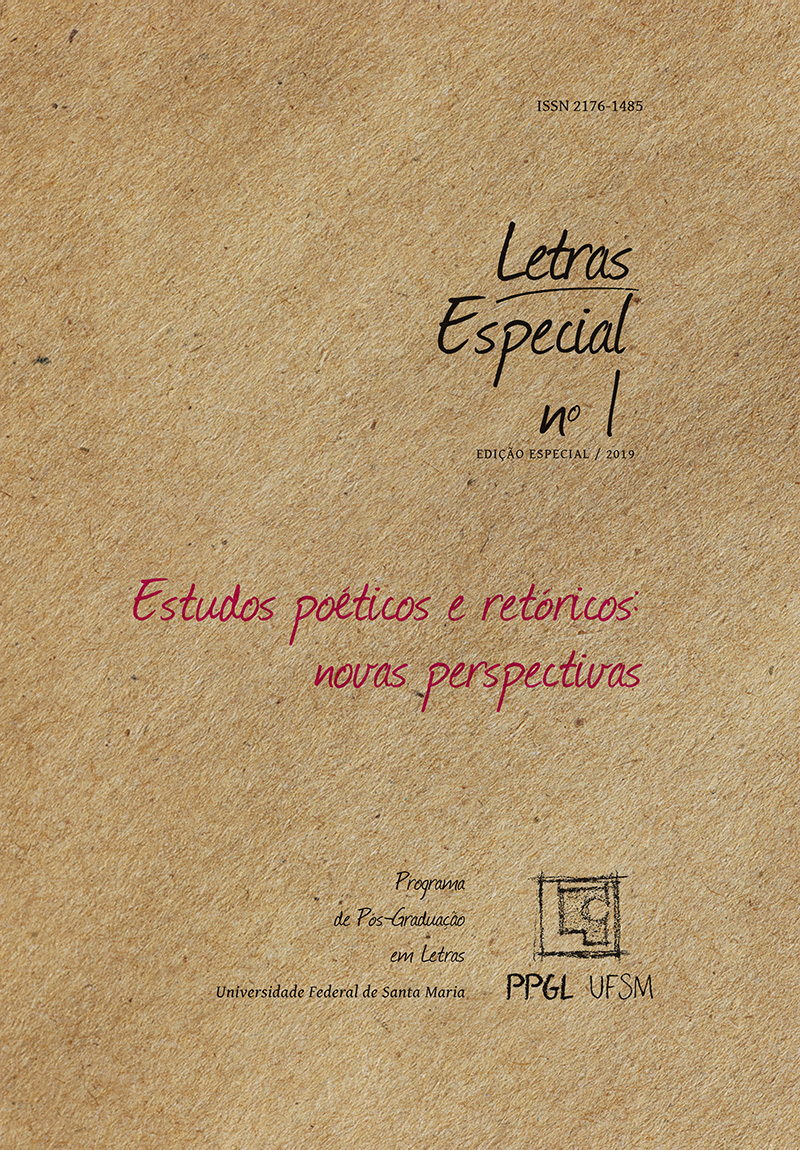Allegory in Father Antonio Vieira’s sermons: some questions on its use and terminology
DOI:
https://doi.org/10.5902/2176148538272Keywords:
Father Antonio Vieira, Sermon, Allegory, TypologyAbstract
In this article, I discuss the concept of allegory, as well as the related terms ‘type’ and ‘figure’ amid the Christian hermeneutical tradition, in order to understand their use in Father Antonio Vieira’s sermons. Stemming from the assumption that the terminology may be insufficient to comprehend the multifarious use implied by these concepts, we opt tosubsidiarily employ the notion of “reading strategies”, based on Young (1997), as a tool to map the various uses of allegory as a means of interpretation. Through a qualitative sampling of Vieira’s sermons, we show the varied use of this terms and the pertinence of comprehending the allegorical strategies employed by the Jesuit to rhetorically and theologically compose his sermons.
Downloads
References
AUERBACH, Erich. Figura. São Paulo: Ática, 1997.
AUERBACH, Erich. Mimesis. São Paulo: Perspectiva, 1994.
CEIA, Carlos. Sobre o conceito de alegoria. In: Matraga, n. 10, outubro de 1998.
DAHAN, Gilbert. L’allégoriedansl’exégèsechrétienne de la Bible au Moyen Age. In: Allégorie des poètes, allégorie des philosophes: étudessur la poétique et l’herméneutique de l’allégorie de l’antiquité à la réforme : table rondeinternationale de l’Institut des traditions textuelles, Fédération de recherche 33 du CNRS. Actespubliés sous la direction de Gilbert Dahan et Richard Goulet..Paris :Vrin, 2005.
DANIÉLOU, Jean. Qu’est-ce que la Typologie? In: AUVRAY, Paul et al. L’Ancien Testament et les Chrétiens. Paris: Les Éditions du CERF, 1951, p. 199-205.
DANIÉLOU, Jean. From Shadows to Reality: Studies in the Biblical Typology of the Fathers. Westminster, MA, USA: The Newman Press, 1960.
EVANS, Craig A. The Christian Adoption Of The Old Testament. In: BYRNE, Peter; HOULDEN, Leslie (ed.). Companion Encyclopedia of Theology. New York: Routledge, 1995.
FOUCAULT, Michel. As Palavras e as Coisas: uma arqueologia das ciências humanas. 9. ed. São Paulo: Martins Fontes, 2007.
FRYE, Northrop. The Great Code: the Bible and Literature. New York, USA: Harcourt Brace Jovanovich Publishers, 1982.
GALDON, Joseph A., S.J. Typology and Seventeenth-Century Literature. The Hague, The Netherlands: Mouton, 1975.
GOPPELT, Leonhard. Typos: The Typological Interpretation of the Old Testament in the New. Grand Rapids, Michigan, USA: WillIam B. Eerdmans Publishing Company, 1982.
HANSEN, J.A. Alegoria: construção e interpretação da metáfora. São Paulo, SP: Hedra; Campinas, SP: Editora da Unicamp, 2006.
HANSEN, J.A. Vieira: tempo, alegoria e história. In: Brotéria, 145, 4, 1997, p. 541-556.
HANSEN, J.A. Vieira: tempo, história e providencialismo figural. (Mimeo.). s/d.
LUBAC, Henri de. “Typologie” et “Allégorisme”. In: Recherches de Science Religieuse, v. 34, 1947, pp. 180-226.
MONTAGUE, George T. Understanding the Bible: a basic introduction to biblical interpretation. Rev. & expanded ed. New Jersey: Paulist Press, 2007.
MOREIRA, Marcello; ROCHA, Marília Librandi. (orgs.). Questões para João Adolfo Hansen. In: FLOEMA - Caderno de Teoria e História Literária, Vitória da Conquista, Ano I, n. 1 p. 11-25 2005.
O’KEEFE, John J.; RENO, R.R. Sanctified Vision an introduction to early Christian Interpretation of the Bible. Baltimore, MA, USA: Johns Hopkins University Press, 2005.
PÉCORA, Alcir. Para Ler Vieira: As 3 Pontas das Analogias nos Sermões. In:Floema. Caderno de Teoria e História Literária. Ano I, n. 1, Vitória da Conquista, 2005, p. 29-36.
PÉCORA, Alcir. Teatro do sacramento: a unidade teológico-retórico-política dos sermões de Antonio Vieira. Campinas: UNICAMP, [1994], 2008.
SARAIVA, António José.O discurso engenhoso: estudos sobre Vieira e outros autores barrocos. São Paulo: Perspectiva, 1980.
SILVA, Antônio de Morais, 1755-1824; BLUTEAU, Rafael, 1638-1734. Diccionario da linguaportugueza composto pelo padre D. Rafael Bluteau, reformado, e accrescentado por Antonio de Moraes Silva natural do Rio de Janeiro. 2. V. Lisboa : Na Officina de Simão Thaddeo Ferreira, 1789.
SIMONETTI, Manlio. Biblical Interpretation in the Early Church: an historical introduction to Patristic exegesis. Edinburgh, UK: T&T Clark, 1994.
VIEIRA, Antônio. Obra Completa Padre Antônio Vieira. (direção José Eduardo Franco, Pedro Calafate). São Paulo: Edições Loyola, 2016.
WHITMAN, Jon. Allegory: the dynamics of an ancient and medieval technique. Cambridge,Massachussets: Harvard University Press, 1987.
WOOLLCOMBE, K.J. The biblical origins and patristic development of typology. In: LAMPE, G.W. H.; ___. Essays on Typology. London: SCM Press, 1957.
YOUNG, Frances M. Biblical Exegesis and the Formation of Christian Culture. Cambridge, UK: Cambridge University of Press, 1997, p. 9 e segs.
Downloads
Published
How to Cite
Issue
Section
License
Copyright (c) 2019 Letras

This work is licensed under a Creative Commons Attribution-NonCommercial-ShareAlike 4.0 International License.
Ficam concedidos a Letras todos os direitos autorais referentes aos trabalhos publicados. Os originais não devem ter sido publicados ou submetidos simultaneamente a outro periódico e não serão devolvidos. Em virtude de aparecerem nesta revista de acesso público, os artigos são de uso gratuito, com atribuições próprias, em aplicações educacionais e não comerciais.






